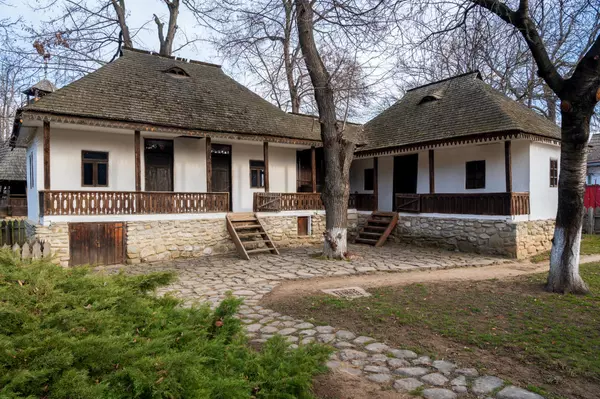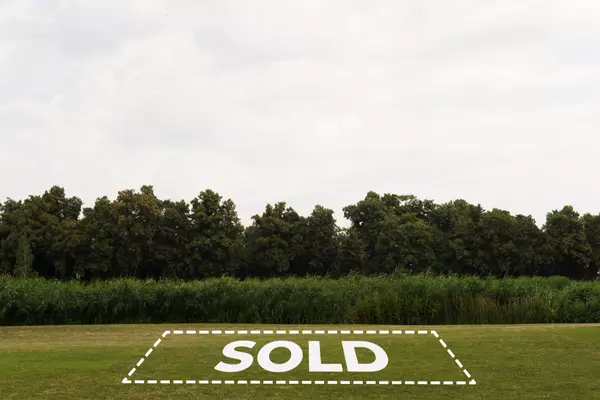

How to Choose a Profitable Investment Property
How to Choose a Profitable Investment Property Are you looking to invest in real estate but unsure of how to choose a profitable investment property? In this comprehensive guide, we will provide you with expert tips and strategies to help you make informed decisions when it comes to selecting the best investment property for your portfolio. Factors to consider when choosing an investment property When it comes to choosing an investment property, there are several key factors to consider. These include the location of the property, the type of property, the potential for rental income, the overall condition of the property, and the local market trends. Market trends and demand - Research the current real estate market in your target area. - Look for areas experiencing growth in population, job opportunities, and infrastructure development. - Analyze rental market trends, such as vacancy rates and rental prices, to gauge demand. - Consider factors like gentrification, urbanization, and demographic shifts that can affect demand. Property condition and maintenance costs - Inspect the property thoroughly for any structural issues, maintenance needs, or repairs. - Consider the age of the property and the condition of major systems like plumbing, electrical, and HVAC. - Estimate ongoing maintenance costs, including regular upkeep and unexpected repairs. - Factor in renovation or upgrade costs if necessary to attract tenants or increase property value. Financing options and affordability - Explore different financing options, including conventional mortgages, FHA loans, VA loans, or investment property loans. - Calculate your budget and determine how much you can afford to invest in a property. - Consider factors like down payment requirements, interest rates, and loan terms. - Evaluate the potential for rental income to cover mortgage payments and other expenses. Long-term growth potential - Assess the potential for property appreciation based on historical trends and future projections. - Consider factors like location, economic development, and infrastructure improvements that can drive property values up. - Look for areas with planned developments or revitalization projects that may boost property values in the future. - Evaluate the long-term demand for rental properties in the area and the potential for rent growth. Risk assessment and mitigation strategies - Identify potential risks associated with the investment property, such as economic downturns, natural disasters, or tenant turnover. - Develop strategies to mitigate these risks, such as purchasing insurance coverage, setting aside reserves for emergencies, or diversifying your investment portfolio. - Consider the stability of the neighborhood and local market conditions to minimize risks related to property vacancy or depreciation. - Consult with real estate professionals, financial advisors, or property management experts to assess risk factors and develop a risk management plan. Tips for selecting a profitable rental property One of the most important tips for selecting a profitable rental property is to carefully research the local rental market. Conduct thorough market research - Research the local real estate market to understand trends, demand, and rental rates in the area. - Look at historical data and current market conditions to identify opportunities and risks. - Consider factors like job growth, population demographics, and development plans that can impact rental demand and property values. - Explore different neighborhoods within your target area to find the best investment opportunities. Set clear investment goals and criteria - Define your investment objectives, whether it's generating passive income, building equity, or achieving long-term appreciation. - Determine your budget and risk tolerance to guide your investment decisions. - Establish criteria for the type of property you're looking for, such as location, size, condition, and potential rental income. - Prioritize your investment goals and criteria to focus your search and make more strategic decisions. Consider both short-term and long-term rental strategies - Evaluate the pros and cons of short-term rentals (e.g., Airbnb, vacation rentals) versus long-term rentals (e.g., traditional leases). - Assess the demand for both rental options in your target market and the potential for higher rental income. - Consider factors like seasonality, tourism trends, and regulatory restrictions that can impact short-term rental profitability. - Choose a rental strategy that aligns with your investment goals, property type, and management capabilities. Evaluate the potential for value appreciation - Look for properties in areas with strong potential for appreciation based on factors like location, economic growth, and development projects. - Consider historical appreciation rates and future growth projections to assess the long-term value of the property. - Identify neighborhoods undergoing revitalization or gentrification that may experience above-average appreciation. - Consult with real estate professionals or market analysts to evaluate the appreciation potential of different investment opportunities. Seek professional advice from real estate agents and property managers - Work with experienced real estate agents who specialize in investment properties and understand the local market dynamics. - Tap into the expertise of property managers who can provide insights into rental demand, property management strategies, and tenant screening. - Consult with financial advisors or investment consultants to analyze the financial aspects of your investment and develop a comprehensive strategy. - Build a network of professionals, including contractors, inspectors, and attorneys, to support your investment journey and ensure a smooth transaction process. What makes a good investment property? A good investment property offers a strong potential for long-term growth and profitability. This includes properties that are located in desirable neighborhoods, have a high demand for rental housing, and are in good condition. Additionally, a good investment property should have a positive cash flow, meaning that the rental income exceeds the expenses associated with owning the property. Location with high rental demand and low vacancy rates - Choose a property in an area where there is strong demand for rental housing. - Look for neighborhoods with low vacancy rates, indicating a high demand for rental properties. - Consider factors such as proximity to schools, universities, employment centers, public transportation, and amenities like shopping centers and parks. - Research local market trends and demographics to gauge the level of rental demand and identify areas with growth potential. - Avoid areas with oversaturated rental markets or high vacancy rates, which may indicate an oversupply of rental properties. Positive cash flow potential - Calculate the potential rental income and expenses to determine if the property will generate positive cash flow. - Factor in all expenses, including mortgage payments, property taxes, insurance, maintenance, vacancies, and property management fees. - Aim for a rental property that generates enough rental income to cover expenses and provide a steady cash flow. - Consider properties with higher rental yields relative to purchase price or investment costs. - Look for opportunities to increase rental income through rent appreciation, property improvements, or value-added amenities. Appreciation Potential - Invest in properties located in areas with strong potential for appreciation over time. - Research historical property appreciation rates and future growth projections for the local market. - Consider factors such as population growth, job opportunities, infrastructure development, and urban revitalization projects that can contribute to property appreciation. - Look for neighborhoods undergoing gentrification or redevelopment that may experience above-average appreciation rates. - Choose properties with features or amenities that add value and appeal to tenants, such as proximity to amenities, scenic views, or unique architectural features. Low maintenance and management requirements - Select a property that requires minimal ongoing maintenance and management. - Look for properties with newer construction or recently renovated features that are less likely to require major repairs. - Consider the condition of major systems like plumbing, electrical, HVAC, and roofing to assess maintenance needs. - Choose low-maintenance landscaping and exterior materials to reduce upkeep costs. - Evaluate the property management requirements and consider hiring professional property managers to handle day-to-day operations, tenant relations, and maintenance tasks. Diverse and stable economy in the area - Invest in properties located in areas with a diverse and stable economy. - Look for regions with multiple industries, job sectors, and employers to reduce reliance on any single economic sector. - Research local economic indicators such as employment rates, income levels, GDP growth, and business expansion or relocation. - Consider the presence of major employers, educational institutions, healthcare facilities, and government agencies that contribute to economic stability and growth. - Avoid areas with economic volatility, declining industries, or high unemployment rates that may negatively impact rental demand and property values. How to analyze potential investment properties Analyzing potential investment properties requires a comprehensive approach that considers various critical factors. Assess property value and potential for appreciation Evaluate rental income potential and expenses Analyze cash flow and ROI projections Consider tax implications and deductions Compare investment properties using relevant metrics Location criteria for investment properties The location of an investment property is one of the most important factors to consider. Properties located in desirable neighborhoods with strong rental demand are more likely to attract tenants and generate consistent rental income. Additionally, properties located in areas with growth potential and economic stability are more likely to appreciate over time. Assess property value and potential for appreciation - Conduct a comparative market analysis (CMA) to determine the current market value of the property. - Research recent sales of similar properties in the area to gauge property values. - Consider factors such as location, condition, size, amenities, and recent renovations that can affect property value. - Evaluate the potential for future appreciation based on market trends, economic indicators, and development projects in the area. Evaluate rental income potential and expenses - Estimate the potential rental income by researching comparable rental properties in the area. - Consider factors such as property size, location, amenities, and market demand that can influence rental rates. - Calculate potential rental income based on market rents and occupancy rates. - Estimate ongoing expenses, including property taxes, insurance, maintenance, utilities, property management fees, and vacancy rates. - Determine the net operating income (NOI) by subtracting operating expenses from rental income. Analyze cash flow and ROI projections - Calculate the cash flow by subtracting mortgage payments, property expenses, and vacancy losses from rental income. - Evaluate the cash-on-cash return (COC) by dividing the annual cash flow by the initial investment (down payment and closing costs). - Consider the return on investment (ROI) over time, including potential appreciation and equity buildup. - Use financial modeling tools or spreadsheets to project cash flow and ROI under different scenarios, such as varying rental rates, occupancy levels, and financing options. - Compare the projected returns to your investment goals and criteria to assess the viability of the investment. Consider tax implications and deductions - Consult with a tax advisor or accountant to understand the tax implications of real estate investment. - Identify tax deductions and benefits available to real estate investors, such as mortgage interest, property taxes, depreciation, and operating expenses. - Consider the impact of tax deductions on your overall cash flow and ROI projections. - Evaluate tax-deferred investment strategies, such as 1031 exchanges, to defer capital gains taxes and reinvest proceeds into additional properties. Compare investment properties using relevant metrics - Use key metrics and ratios to compare investment properties and identify the most promising opportunities. - Consider metrics such as cap rate (capitalization rate), cash-on-cash return (COC), gross rent multiplier (GRM), and internal rate of return (IRR). - Evaluate qualitative factors such as location, property condition, tenant quality, and market demand alongside quantitative metrics. - Create a spreadsheet or investment analysis tool to compare properties side by side and make informed investment decisions. - Prioritize properties that offer the best combination of rental income, appreciation potential, cash flow, and ROI relative to your investment goals and criteria. Location criteria for investment properties Proximity to amenities and services Quality of schools and recreational facilities Transportation accessibility Neighborhood safety and crime rates Overall economic and demographic trends Income potential of different types of investment properties Different types of investment properties offer varying income potential. For example, single-family homes may offer stable rental income but limited appreciation potential, while multi-family properties may generate higher rental income but require more maintenance. Residential rental properties (apartments, single-family homes) Commercial rental properties (office spaces, retail shops) Vacation rental properties (short-term rentals, Airbnb) Mixed-use properties (combination of residential and commercial) Evaluating the rental market for investment properties Rental vacancy rates Average rental prices and trends Population growth and demographic shifts Employment opportunities and job growth Regulatory environment and landlord-tenant laws ROI calculation for investment properties Calculating the ROI (Return on Investment) for an investment property involves analyzing the potential income and expenses associated with owning the property. Formula for calculating ROI (Return on Investment) Factors influencing ROI (rental income, property appreciation, expenses) Importance of setting realistic ROI expectations Tools and resources for ROI analysis Avoiding common pitfalls when buying investment properties There are several common pitfalls to avoid when buying investment properties. These include overpaying for a property, neglecting to conduct proper due diligence, and underestimating the expenses associated with owning the property. Overlooking hidden costs and expenses Ignoring due diligence and inspection processes Underestimating market fluctuations and risks Failing to diversify investment portfolio Not planning for property management and maintenance Assessing property management options for investment properties When it comes to managing investment properties, there are several options to consider. These include self-managing the property, hiring a property management company, or partnering with a real estate investment firm. By carefully weighing the pros and cons of each option, you can determine the best property management strategy for your investment portfolio. Understanding cash flow in investment properties Cash flow is a crucial concept to understand when it comes to investment properties. Positive cash flow occurs when the rental income exceeds the expenses associated with owning the property, while negative cash flow occurs when expenses exceed income. By carefully managing cash flow and maximizing rental income, you can ensure the long-term profitability of your investment properties. Economic indicators for choosing investment properties Let's explore each economic indicator and its relevance for choosing investment properties: Interest rates and mortgage market conditions - Monitor prevailing interest rates and mortgage market conditions, as they directly affect borrowing costs for real estate investors. - Lower interest rates typically stimulate demand for real estate by making financing more affordable, leading to increased property values and investment activity. - Rising interest rates may reduce affordability and slow down property appreciation, potentially affecting investment returns and market dynamics. - Consider the impact of interest rate fluctuations on mortgage payments, cash flow, and the overall cost of financing investment properties. Employment and income levels - Evaluate local employment and income levels to gauge the economic health and stability of the area. - Strong job growth and rising incomes can drive demand for rental housing and support property appreciation. - Research key industries, employers, and job sectors in the area to assess employment stability and growth prospects. - Monitor unemployment rates and labor market trends to identify areas with robust economic fundamentals and investment potential. GDP growth and economic stability - Track regional and national GDP growth rates to understand broader economic trends and market conditions. - Economic stability and growth contribute to consumer confidence, business investment, and real estate demand. - Assess economic diversification, infrastructure development, and business climate to evaluate the overall stability and resilience of the local economy. - Consider the impact of economic shocks, recessions, or external factors on real estate markets and investment performance. Housing market trends and forecasts - Analyze housing market trends and forecasts to identify emerging opportunities and risks in the real estate market. - Look for indicators such as home price appreciation, inventory levels, days on the market, and housing affordability. - Research supply and demand dynamics, including new construction activity, population growth, and migration patterns. - Consider expert forecasts and market reports from reputable sources to inform investment decisions and timing. Regulatory and tax policies affecting real estate investment - Stay informed about regulatory and tax policies that impact real estate investment, including zoning regulations, land use restrictions, and rent control ordinances. - Evaluate property tax rates, transfer taxes, and other local taxes that affect property ownership and operating expenses. - Consider the potential impact of regulatory changes on property values, rental income, and investment returns when assessing investment opportunities.
Read More

What's the Difference Between a Stick Home and a Masonry Home?
Stick Home and a Masonry Home? When it comes to choosing between stick homes and masonry homes, there are several key differences that homeowners should be aware of. Stick homes are constructed using a traditional wood framing method, while masonry homes are built using materials such as brick, concrete blocks, or stone. Differences between Stick Homes and Masonry Homes Stick-built homes, also known as traditional frame homes, are constructed using wooden framing elements. On the other hand, masonry homes are built with materials like bricks, concrete blocks, or stones. The primary variance lies in the core materials used for the construction of the two types of homes. Here are some key distinctions: 1. Materials Used: - Stick-built homes: These are primarily constructed using wooden framing elements, such as studs, joists, and rafters. The exterior walls may be covered with various materials like plywood, oriented strand board (OSB), or gypsum sheathing. - Masonry homes: These are built using materials like bricks, concrete blocks, or stones for the structural elements of the building. The walls of masonry homes are typically made of brick or block, providing durability and strength. 2. Construction Method: - Stick-built homes: The construction process involves assembling the wooden framing on-site, piece by piece. The wooden frame is erected first, followed by the installation of other components like insulation, wiring, plumbing, and exterior finishes. - Masonry homes: Construction of masonry homes involves laying bricks, blocks, or stones in a pattern to form the walls of the structure. Mortar is used to bind the masonry units together, creating a solid and load-bearing wall system. 3. Durability and Strength: - Stick-built homes: While wooden framing is strong, it may be more susceptible to damage from moisture, pests, and fire compared to masonry materials. However, with proper maintenance and construction techniques, stick-built homes can last for generations. - Masonry homes: Masonry construction offers excellent durability and strength. Brick, concrete blocks, and stones are resistant to fire, rot, and pests, making masonry homes less vulnerable to damage over time. They also provide good insulation and soundproofing. 4. Cost and Labor: - Stick-built homes: Generally, stick-built homes may require less initial investment and labor compared to masonry homes. However, factors such as the quality of materials, design complexity, and labor costs can influence the overall cost. - Masonry homes: The use of brick, block, or stone in construction can make masonry homes more expensive upfront due to the cost of materials and labor-intensive construction methods. However, they may offer long-term cost savings through reduced maintenance and energy efficiency. Benefits of Masonry Home Construction Masonry homes offer several advantages over stick-built homes. They are known for their superior durability, fire resistance, and noise reduction properties. Additionally, masonry homes tend to have better insulation, which can result in lower energy bills over time. The robust nature of masonry construction also contributes to a longer lifespan for the home. Indeed, masonry home construction offers several notable benefits, which contribute to its popularity and appeal: 1. Durability: Masonry materials like bricks, concrete blocks, and stones are inherently strong and durable. They can withstand harsh weather conditions, including high winds, heavy rains, and temperature fluctuations, better than traditional wooden framing. 2. Fire Resistance: One of the significant advantages of masonry construction is its excellent fire resistance. Bricks, concrete blocks, and stones do not burn, making masonry homes highly resistant to fire damage. 3. Noise Reduction: The dense and solid nature of masonry walls provides effective sound insulation, reducing the transmission of noise from outside and between rooms. 4. Energy Efficiency: Masonry homes typically have better insulation properties compared to stick-built homes. The thermal mass of masonry materials helps regulate indoor temperatures by absorbing and storing heat, reducing the need for excessive heating or cooling. 5. Low Maintenance: Due to their durability and resistance to environmental factors, masonry homes require minimal maintenance compared to other construction methods. There is no need for regular painting or sealing of exterior walls, and masonry materials do not rot or deteriorate over time. Comparing Costs of Stick Homes versus Masonry Homes Exactly. The upfront cost of stick-built homes is typically lower than that of masonry homes due to factors such as material expenses and labor costs. However, over time, masonry homes may provide long-term savings through their energy efficiency and reduced maintenance needs. While stick-built homes may seem more affordable initially, ongoing expenses related to maintenance, repairs, and energy consumption can add up over the years. On the other hand, the superior insulation properties of masonry construction can lead to lower energy bills, and the durable nature of masonry materials requires less maintenance, resulting in potential cost savings in the long run. Therefore, when deciding between stick-built and masonry construction, homeowners must consider not only the upfront construction costs but also the potential savings and expenses over the lifespan of the home. Building Materials for Stick Homes and Masonry Homes The primary building materials used in stick homes are wood, plywood, and engineered lumber. Conversely, masonry homes utilize materials like bricks, concrete blocks, and stone. The choice of building materials can impact various aspects of the home, including its aesthetics, structural integrity, and maintenance needs. Here's a breakdown of how each set of materials can impact different aspects of the home: 1. Structural Integrity: - Stick-built homes: The primary use of wood, plywood, and engineered lumber in stick-built homes provides a flexible and lightweight framework. While wood framing can be robust when constructed correctly, it may be more susceptible to damage from factors like moisture, pests, and fire compared to masonry materials. - Masonry homes: Materials like bricks, concrete blocks, and stone offer excellent structural integrity and load-bearing capacity. 3 Insulation and Energy Efficiency: - Stick-built homes: While wood framing provides some insulation, additional insulation materials such as fiberglass batts or foam boards are typically installed between the studs to improve energy efficiency. However, stick-built homes may have lower thermal mass compared to masonry homes. - Masonry homes: The thermal mass of masonry materials helps regulate indoor temperatures by absorbing and storing heat, resulting in better insulation and energy efficiency. 4. Maintenance Needs: - Stick-built homes: Wood framing requires regular maintenance to protect against moisture damage, rot, and pests. Exterior finishes may need periodic painting or staining to maintain their appearance and protect against weathering. - Masonry homes: Masonry materials are inherently durable and require minimal maintenance compared to wood framing. Brick, concrete blocks, and stone are resistant to rot, pests, and weather damage, reducing the need for frequent repairs or refinishing. Choosing between Stick Homes and Masonry Homes Deciding between stick-built and masonry homes involves careful consideration of various factors to ensure it align with your needs and preferences. Here's a summarized checklist to help you weigh the pros and cons of each option: Budget: - Stick-built: Generally more affordable upfront due to lower material and labor costs. - Masonry: Initial costs may be higher, but long-term savings could offset this through energy efficiency and reduced maintenance needs. Aesthetic Preferences: - Stick-built: Offers flexibility in design and exterior finishes, ranging from traditional to modern styles. - Masonry: Provides a timeless and classic appearance with natural textures and colors of bricks, blocks, or stone. Structural Integrity: - Stick-built: Wood framing may be susceptible to damage from moisture, pests, and fire. - Masonry: Offers excellent structural integrity and durability, resistant to weather elements and fire. Insulation and Energy Efficiency: - Stick-built: Requires additional insulation materials, but can achieve energy efficiency with proper installation. - Masonry: Provides inherent insulation properties and thermal mass, leading to better energy efficiency and lower utility bills. Maintenance Requirements: - Stick-built: Requires regular maintenance to protect against moisture damage, rot, and pests, as well as exterior finishes. - Masonry: Minimal maintenance is needed due to the durability and resistance of masonry materials. Long-Term Sustainability: - Stick-built: Can be sustainable with proper construction techniques and use of eco-friendly materials, but may not offer the same longevity as masonry. - Masonry: Offers long-term sustainability, with durability and energy efficiency contributing to reduced environmental impact over time. Consultation with Professionals: - Seek advice from builders, architects, or construction professionals to evaluate your specific needs and priorities. - Discuss potential challenges, cost considerations, and benefits of each construction type to make an informed decision. Is a Stick-Built Home More Affordable than a Masonry Home? In the real estate market, understanding the upfront costs and long-term benefits of stick-built versus masonry homes is crucial. Stick-built homes often offer immediate affordability, while masonry construction boasts durability, energy efficiency, and low maintenance. Delve into the comparison to make an informed decision for your dream home. What Are the Energy Efficiency Differences between Stick-Built and Masonry Homes? Masonry homes shine in energy efficiency, outperforming stick-built counterparts with their exceptional insulation properties. Leveraging the thermal mass of masonry materials, these homes regulate indoor temperatures effectively, slashing the dependency on heating and cooling systems. Dive into the comparison to uncover how masonry construction can lead to substantial energy savings and elevate your living experience. Do Stick Homes Require More Maintenance than Masonry Homes? Yes, that's generally true. Stick-built homes, constructed primarily from wood framing, are indeed more susceptible to issues like pests, rot, and moisture damage compared to masonry homes, which are typically built using materials like bricks, concrete blocks, or stone. Here's why: 1. Pests: Wood is attractive to various pests like termites, carpenter ants, and wood-boring beetles, which can cause significant damage to the structure over time. Regular inspections and pest control measures are necessary to prevent infestations in stick-built homes. 2. Rot: Wood is prone to rot when exposed to moisture over extended periods. This can occur due to leaks in the roof, plumbing issues, or poor drainage around the foundation. Rot compromises the structural integrity of the home and requires timely repairs to prevent further damage. 3. Moisture Damage: Moisture can seep into the wooden components of stick-built homes through cracks, gaps, or poorly sealed areas. This can lead to mold growth, decay, and deterioration of the wood. Proper ventilation, waterproofing, and maintenance of exterior surfaces are essential to minimize moisture-related problems. In contrast, masonry homes offer better resistance to pests, rot, and moisture damage due to the durability and strength of the materials used. However, they may still require maintenance, such as repointing mortar joints, sealing cracks, and addressing any water intrusion issues. How Do Insurance Costs Differ for Stick-Built and Masonry Homes? Insurance costs for stick-built and masonry homes can vary based on factors such as construction materials, location, and risk factors. Generally, masonry homes may have lower insurance premiums due to their superior durability and resistance to hazards like fire and severe weather. It is advisable to consult with insurance providers to compare quotes and coverage options for both types of home construction.The choice between a stick-built home and a masonry home depends on various factors such as budget, preferences, and long-term considerations.
Read More

Selling Your Home during Calgary's Peak Season 2024: What to Expect
Selling Your Home during Calgary's Peak Season Are you considering selling your home in Calgary during the peak season? It's essential to understand what to expect and how to navigate the process effectively. In this comprehensive guide, we will provide you with valuable tips and insights to help you make the most of selling your home during Calgary's busy real estate season. 10 Additional Tips for Selling Your Home in Calgary's Peak Season: 1. Highlight Outdoor Features: Showcase any outdoor amenities your property offers, such as a well-maintained lawn, landscaping, patio, or deck. Calgary's summers can be beautiful, and buyers often value outdoor living spaces. 2. Stage for Seasonal Appeal: Stage your home to reflect the season. In spring and summer, consider adding fresh flowers, light, airy curtains, and bright accents to create a welcoming atmosphere. 3. Emphasize Energy Efficiency: Calgary's climate can vary, but energy efficiency is always a selling point. Highlight features like upgraded insulation, energy-efficient windows, or a newer HVAC system appeal to eco-conscious buyers. 4. Address Maintenance Concerns: Take care of any necessary repairs or maintenance tasks before listing your home. Buyers in peak season tend to be more discerning, so ensuring your property is in top condition can help it stand out. 5. Promote Neighborhood Attractions: Calgary offers a range of attractions, from parks and recreational facilities to shopping and dining options. Highlight nearby amenities and community features to appeal to potential buyers. 6. Flexible Showing Schedule: With longer daylight hours during peak season, consider offering flexible showing times to accommodate potential buyers' schedules. This flexibility can make it easier for interested parties to view your home. 7. Stay Informed About Market Changes: Keep abreast of any changes in the Calgary real estate market, such as shifts in supply and demand or fluctuations in interest rates. Being informed allows you to adjust your selling strategy accordingly. 8. Utilize Digital Marketing: In addition to professional photography, leverage digital marketing channels to reach a broader audience. Utilize social media, online listings, and virtual tours to showcase your property effectively. 9. Highlight School Districts: For families with children, proximity to quality schools can be a significant selling point. Highlight any nearby schools or educational facilities in your marketing materials. 10. Work with a Knowledgeable Agent: Partner with a real estate agent who has experience selling homes in Calgary's peak season. A knowledgeable agent can provide valuable insights, guidance, and support throughout the selling process. By following these tips and working with a trusted real estate professional, you can maximize your chances of selling your home quickly and for a favorable price during Calgary's peak season. Best time to sell a house in Calgary Yes, generally speaking, the spring and summer months are considered the best time to sell a house in Calgary. Here are a few reasons why: 1. Weather: Calgary's weather tends to be more favorable in the spring and summer, with milder temperatures and longer daylight hours. This makes it more comfortable for buyers to attend open houses and view properties. 2. Curb Appeal: The spring and summer months allow homeowners to showcase their property's exterior more effectively. Landscaping is in full bloom, and outdoor spaces can be highlighted, which can enhance curb appeal and attract more potential buyers. 3. School Year Timing: Families often prefer to move during the summer months to minimize disruption to their children's schooling. Therefore, they may be more actively looking for homes during this time, increasing demand in the market. 4. Market Activity: Historically, the real estate market in Calgary tends to see increased activity during the spring and summer months. More buyers in the market can lead to higher competition and potentially better offers for sellers. Calgary real estate market trends during peak season During Calgary's peak season, which typically falls in the spring and summer months, several trends tend to emerge in the real estate market: 1. Increased Buyer Activity: With warmer weather and longer daylight hours, more buyers tend to enter the market during peak season. This heightened demand can lead to more competition among buyers for available properties. 2. Faster Sales: Homes often sell more quickly during peak season as buyers are more actively searching and making decisions. Sellers may receive multiple offers on their properties, leading to faster sales transactions. 3. Higher Sale Prices: The increased competition among buyers during peak season can drive up sale prices. Sellers may be able to command higher offers for their properties, especially if they are well-maintained and priced competitively. 4. Tightened Inventory: While buyer demand increases during peak season, the supply of available homes for sale may not always keep pace. This can lead to a tightened inventory of homes on the market, further fueling competition among buyers. 5. Multiple Offers: In a competitive market, it's not uncommon for sellers to receive multiple offers on their properties, particularly during peak season. This can create bidding wars among buyers, potentially resulting in offers above the listing price. 6. Emphasis on Curb Appeal: With properties selling more quickly during peak season, sellers often prioritize enhancing curb appeal to attract buyers. Well-maintained exteriors, landscaping, and staging can help properties stand out in a competitive market. 7. Effective Pricing Strategies: Pricing your home competitively is crucial during the peak season to attract buyers and generate interest. Working with a real estate agent who understands market trends and comparable sales can help you set the right listing price for your property. 8. Market Variability: While peak season generally sees increased activity and competition, market conditions can vary from year to year. Economic factors, interest rates, and other external influences can impact buyer behavior and market dynamics. Staying informed about these trends and working with a knowledgeable real estate professional can help sellers navigate Calgary's peak season market effectively and maximize their chances of a successful sale. How to stage my home effectively for sale in Calgary's peak season Staging your home effectively can make a significant difference in attracting potential buyers. Consider decluttering, depersonalizing, and highlighting your home's best features to make a lasting impression. Here are some tips for staging your home effectively for sale during Calgary's peak season: 1. Declutter and Depersonalize: Start by decluttering your home to create a clean, spacious feel. Remove personal items such as family photos and excessive decorations to allow potential buyers to envision themselves living in the space. 2. Maximize Natural Light: Open curtains and blinds to let in as much natural light as possible. Bright, well-lit spaces tend to feel more inviting and spacious, which can appeal to buyers. 3. Highlight Key Features: Showcase your home's best features, such as architectural details, built-in storage, or a fireplace. Arrange furniture to highlight focal points and create a sense of flow throughout the space. 4. Neutralize Color Palettes: Consider painting walls in neutral tones to appeal to a broader range of buyers. Neutral colors create a blank canvas that allows buyers to envision their decor style in the home. 5. Enhance Curb Appeal: First impressions matter, so pay attention to your home's exterior. Keep the lawn mowed, trim bushes and trees, and add potted plants or flowers to enhance curb appeal. 6. Create Inviting Outdoor Spaces: If you have a patio, deck, or backyard, stage these areas to showcase their potential for outdoor living and entertaining. Arrange outdoor furniture, add cushions and throw pillows, and create a welcoming atmosphere. 7. Focus on Kitchen and Bathrooms: Kitchens and bathrooms are key selling points for many buyers. Clean and declutter these areas, replace outdated fixtures if necessary, and add small touches like fresh towels or decorative accents to enhance their appeal. 8. Make Necessary Repairs: Take care of any minor repairs or maintenance tasks before listing your home. This includes fixing leaky faucets, repairing cracked tiles, and touching up paint where needed. 9. Add Finishing Touches: Once the major staging tasks are complete, add finishing touches to make your home feel warm and inviting. This could include fresh flowers, scented candles, or strategically placed decorative accessories. Common mistakes to avoid when selling a house in Calgary during peak season Overpricing: Setting the price too high can deter potential buyers and lead to a longer time on the market. Neglecting Repairs: Address any necessary repairs and updates to make your home more appealing to buyers. Lack of Marketing: Utilize online listings, social media, and traditional marketing methods to reach a broader audience of potential buyers. Average time to sell a house in Calgary's peak season The average time to sell a house in Calgary's peak season can vary depending on factors such as location, pricing, and market conditions. On average, homes tend to sell more quickly during this time due to increased buyer activity. Selling a condo vs. selling a house in Calgary's peak season: Which is better? Selling a condo versus a house in Calgary's peak season can depend on individual preferences and market conditions. Condos may appeal to certain buyers looking for low maintenance and amenities, while houses offer more space and privacy. How to set the right price for my home in Calgary's peak season To set the right price for your home during Calgary's peak season, it's essential to work with a real estate agent who can provide a comparative market analysis and insight into current market trends. Pricing your home competitively can help attract more buyers and potentially lead to a quicker sale.Overall, selling your home during Calgary's peak season can be a rewarding experience if approached strategically. By following these tips and avoiding common mistakes, you can increase your chances of a successful sale in this competitive market. Good luck!
Read More

The Pros and Cons of Buying a Condo vs. a House in Calgary 2024
Buying a Condo vs. a House in Calgary 2024 Are you considering purchasing a property in Calgary but can't decide between a condo or a house? Navigating the real estate market in Calgary in 2024 presents a unique set of opportunities and challenges, particularly when choosing between a condominium (condo) and a single-family house. Advantages of Buying a Condo over a House in Calgary Condos are often more affordable than houses, making them an attractive option for first-time homebuyers or those on a tight budget. Additionally, condos typically require less maintenance than houses, as exterior upkeep and landscaping are taken care of by the condo association. Advantages of Buying a Condo in Calgary 1. Affordability Condos often come with a lower price tag compared to houses in Calgary, making them an appealing choice for first-time buyers or those on a budget. The lower purchase price can make homeownership more accessible and reduce the amount of mortgage debt incurred. 2. Maintenance-Free Living One of the significant perks of condo living is the minimal maintenance required. The condo association typically handles exterior maintenance, landscaping, and repairs, allowing owners to enjoy their homes without the burden of heavy upkeep. 3. Amenities Many condo developments offer a range of amenities, such as fitness centers, swimming pools, and party rooms, which can enhance your living experience. 4. Security Condos often provide enhanced security features, including gated access, security cameras, and in some cases, on-site security personnel. 5. Location Condos in Calgary are frequently located in desirable urban areas, close to workplaces, dining, entertainment, and public transportation. This can lead to a vibrant lifestyle and reduce commuting times. Advantages of Buying a House in Calgary 1. Space Houses typically offer more living space than condos, providing more room for families, pets, and storage. This can be particularly appealing for those looking to expand their family or needing extra space for a home office or hobbies. 2. Privacy Owning a house usually means more privacy. Without shared walls or common areas, you're less likely to be disturbed by neighbors. This privacy extends to outdoor spaces, where private yards offer a personal retreat. 3. Freedom to Customize Homeowners have greater freedom to modify their property, from landscaping to renovations. 4. Potential for Appreciation While market conditions can vary, single-family homes in Calgary have historically appreciated at a higher rate than condos. 5. No Condo Fees Unlike condos, houses do not come with monthly condo fees. This can result in lower monthly living costs, especially as condo fees can increase over time. Is Condo Living in Calgary Better for First-Time Homebuyers? Additionally, condos often come with shared amenities that can enhance the overall living experience for new homeowners. condo living in Calgary offers numerous advantages that make it an attractive option for first-time homebuyers. From affordability and convenience to shared amenities and security, condos provide a welcoming entry point into homeownership for those embarking on this exciting journey for the first time. Comparing Monthly Costs: Condo vs. House in Calgary When weighing the financial implications of purchasing a property in Calgary, it's crucial to delve beyond the initial purchase price and consider the ongoing monthly costs associated with homeownership. Here's a breakdown of the key factors to consider when comparing the monthly expenses of owning a condo versus a house: Mortgage Payment: Both condos and houses require monthly mortgage payments, which vary depending on factors such as the purchase price, interest rate, and loan term. While condos typically have lower upfront costs, resulting in smaller mortgage payments initially, house ownership may offer more long-term financial benefits due to potential appreciation in property value. Property Taxes: Property taxes are levied by the municipality and vary based on the assessed value of the property. Condo owners typically pay lower property taxes compared to homeowners, as they only pay taxes on their units rather than the entire property. However, property tax rates can fluctuate over time and should be factored into your monthly budget. Insurance: Homeowners insurance is essential for protecting your investment and covering potential damages to your property. Condo owners typically pay lower insurance premiums compared to homeowners, as the condo association's master insurance policy typically covers the building's structure and common areas. However, condo owners are still responsible for ensuring their personal belongings and liability within their unit. Maintenance and Repairs: Maintenance costs can vary significantly between condos and houses. Condo owners pay monthly condo fees, which cover maintenance and repairs for common areas, exterior upkeep, and amenities. While these fees provide predictability and shared responsibility, they can increase over time and should be considered when budgeting for monthly expenses. In contrast, homeowners are solely responsible for all maintenance and repair costs, which can vary depending on the age and condition of the property. Condo Fees: Condo fees are a significant component of monthly expenses for condo owners and cover expenses such as building maintenance, landscaping, utilities, and amenities. While condo fees provide convenience and shared responsibility for maintenance, they can also increase over time and impact affordability. It's essential to carefully review the condo association's budget and fee structure before purchasing a condo to ensure they are manageable within your budget. Long-Term Financial Considerations: While condos may offer lower upfront costs and monthly expenses, homeownership of a house may offer more long-term financial benefits, such as potential appreciation in property value and equity accumulation. Additionally, owning a house provides greater control over maintenance and renovations, allowing homeowners to customize their property to their preferences and potentially increase its value over time. Maintenance Considerations for Condos vs. Houses in Calgary Here's a closer look at the maintenance considerations for both types of properties: Condos: Exterior Maintenance: One of the primary benefits of condo living is that exterior maintenance tasks, such as landscaping, snow removal, and building repairs, are typically handled by the condo association. Predictable Costs: Condo owners pay monthly condo fees, which cover the cost of exterior maintenance, as well as other shared expenses such as utilities, insurance, and amenities. These fees provide predictability and shared responsibility for maintenance costs, making budgeting easier for homeowners. Limited Control: While condo owners enjoy reduced maintenance responsibilities, they have limited control over exterior improvements and repairs. Major decisions regarding building maintenance and renovations are typically made by the condo association, which may not always align with individual preferences. Houses: Regular Maintenance: Houses require regular maintenance and upkeep to ensure they remain in good condition. This includes tasks such as lawn care, landscaping, gutter cleaning, roof inspections, and exterior painting. While homeowners can customize their property, they also bear the responsibility for maintaining it. Variable Costs: Unlike condos, where maintenance costs are shared among owners through condo fees, homeowners are solely responsible for covering the cost of maintenance and repairs. These expenses can vary depending on the age and condition of the property, as well as any unforeseen issues that may arise. Greater Control: Homeowners have greater control over maintenance decisions and can prioritize repairs and upgrades based on their individual preferences and budgets. This flexibility allows homeowners to personalize their property and invest in improvements that enhance its value and curb appeal. You're all set! This content reads as if it is human-written." data-bs-placement="top" data-bs-html="true"> The Impact of Location on Choosing Between a Condo and a House in Calgary When it comes to purchasing real estate in Calgary, location is undeniably one of the most critical factors to consider. Whether you opt for a condo or a house, the location of your property will significantly influence your lifestyle, convenience, and overall satisfaction with your investment. Here's how location factors into the decision-making process: Condo Living in Urban Areas: Proximity to Amenities: Condos are often strategically located in vibrant urban areas, offering residents easy access to a plethora of amenities such as restaurants, cafes, shops, entertainment venues, and cultural attractions. Public Transportation: Many condo developments are situated near public transportation hubs, making it convenient for residents to commute to work or explore the city without needing a car. Proximity to public transit can significantly enhance mobility and reduce reliance on personal vehicles, promoting sustainability and environmental consciousness. Walkability: Urban condos are typically located within walkable neighborhoods, allowing residents to run errands, exercise, and socialize on foot. The pedestrian-friendly environment fosters a sense of community and encourages a healthy, active lifestyle. Houses in Suburban or Rural Settings: Space and Privacy: Houses in suburban or rural areas offer more space, privacy, and tranquility compared to condos in urban centers. Homeowners can enjoy larger lots, backyard gardens, and outdoor living spaces, providing ample room for relaxation, recreation, and family activities. School Districts: Families with children may prioritize access to reputable schools when choosing a house location. Suburban and rural neighborhoods often boast top-rated school districts, offering quality education and extracurricular opportunities for students of all ages. Community Atmosphere: Suburban and rural communities tend to have a close-knit atmosphere, where neighbors know each other by name and participate in local events and activities. This sense of community fosters social connections, support networks, and a feeling of belonging among residents. Choosing the Right Location: Lifestyle Preferences: Consider your lifestyle preferences and priorities when selecting a location for your property. If you thrive in a dynamic urban environment with easy access to amenities, a condo in the heart of Calgary may be the perfect fit. Alternatively, if you value space, tranquility, and a sense of community, a house in a suburban or rural setting may better suit your needs. Future Plans: Think about your long-term goals and how your chosen location aligns with them. Consider career opportunities, family growth, and lifestyle changes when evaluating different neighborhoods and communities. Consult with a Realtor: A knowledgeable real estate agent, such as Ahsan Ashraf Realtor, can provide valuable insights and guidance to help you find the ideal location for your condo or house in Calgary. With their expertise and local market knowledge, they can assess your needs, preferences, and budget constraints to recommend neighborhoods that meet your criteria and enhance your overall quality of life. Whether you're seeking a vibrant urban setting or a tranquil suburban community, Ahsan Ashraf Realtor can leverage their experience and resources to guide you toward the perfect property location that aligns with your lifestyle and preferences.
Read More
Categories
Recent Posts










